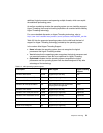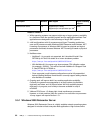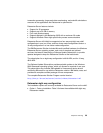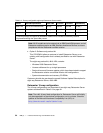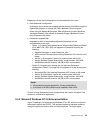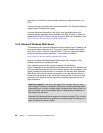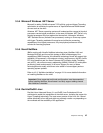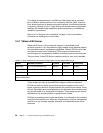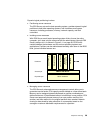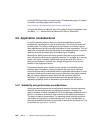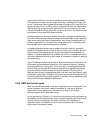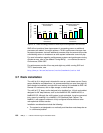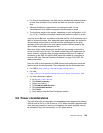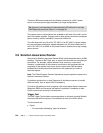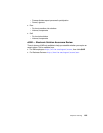
Chapter 3. Planning 99
Dynamic logical partitioning involves:
Partitioning server resources
The ESX Server acts as the host operating system, provides dynamic logical
partitions to hold other operating systems, and virtualizes most system
resources, including processors, memory, network capacity, and disk
controllers.
Isolating server resources
With ESX Server, each hosted operating system thinks it owns the entire
computer, yet it sees only the resources that the administrator (through ESX
Server) assigns to it. As shown in Figure 3-11 on page 99, ESX Server
resides between the hardware and the various operating systems and
applications. Partitions can be administered remotely, even down to the BIOS
level, just as individual servers are.
Figure 3-11 ESX Server resides between the server hardware and server resources
Managing server resources
The ESX Server’s advanced resource management controls allow you to
guarantee service levels. CPU capacity can be allotted on a time-share basis.
Memory can be assigned dynamically based on partition workloads and
defined minimums. If the allocated amount is insufficient in one partition, ESX
Server can temporarily borrow memory from one partition and lend it to
another, and then restore it to the original partition when needed. Network
sharing is determined by token allocation or consumption based on the
average or maximum bandwidth requirements for a partition.
Server hardware
VMware ESX Server
Red Hat Advanced
Server
Windows 2000
Windows NT EE
SuSE Linux
Enterprise
NetWare
Partitions
Virtual layer
Physical layer



